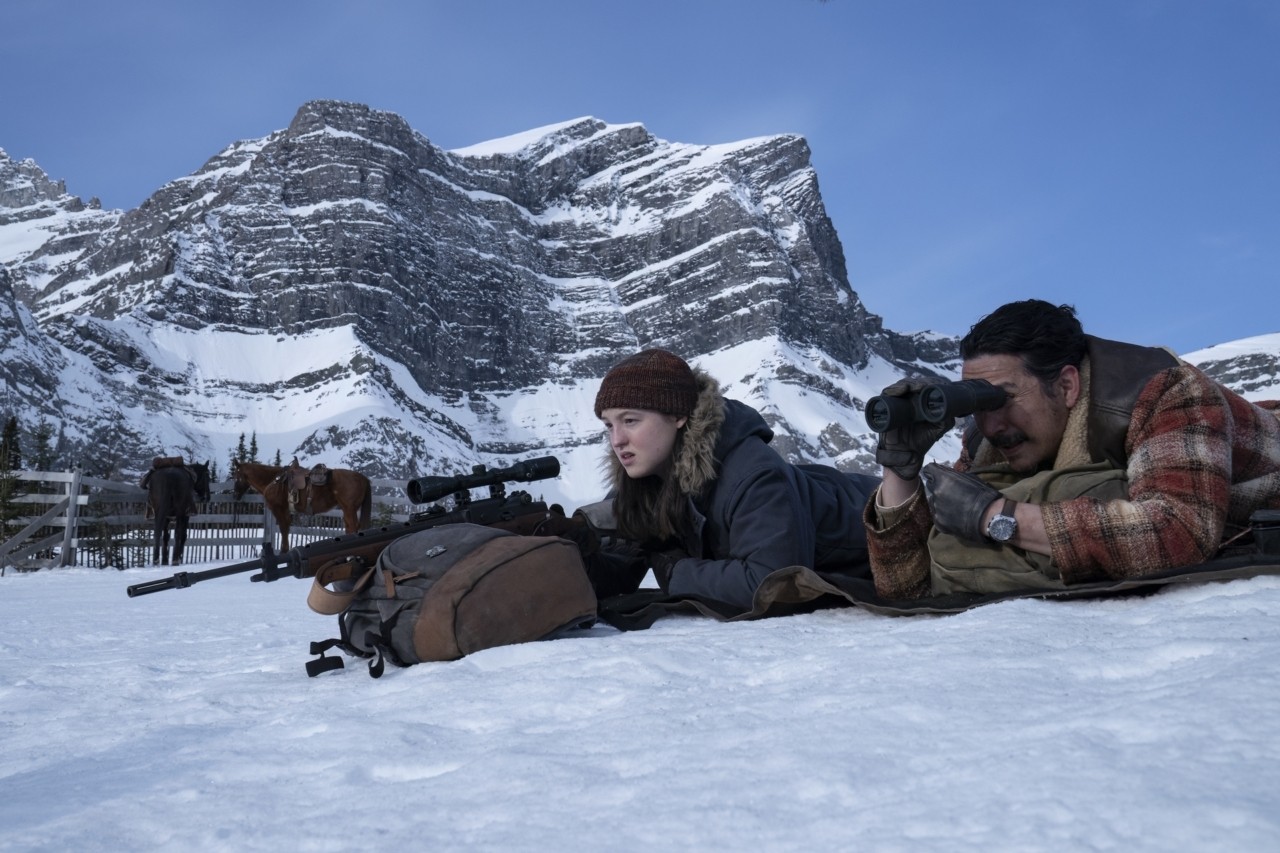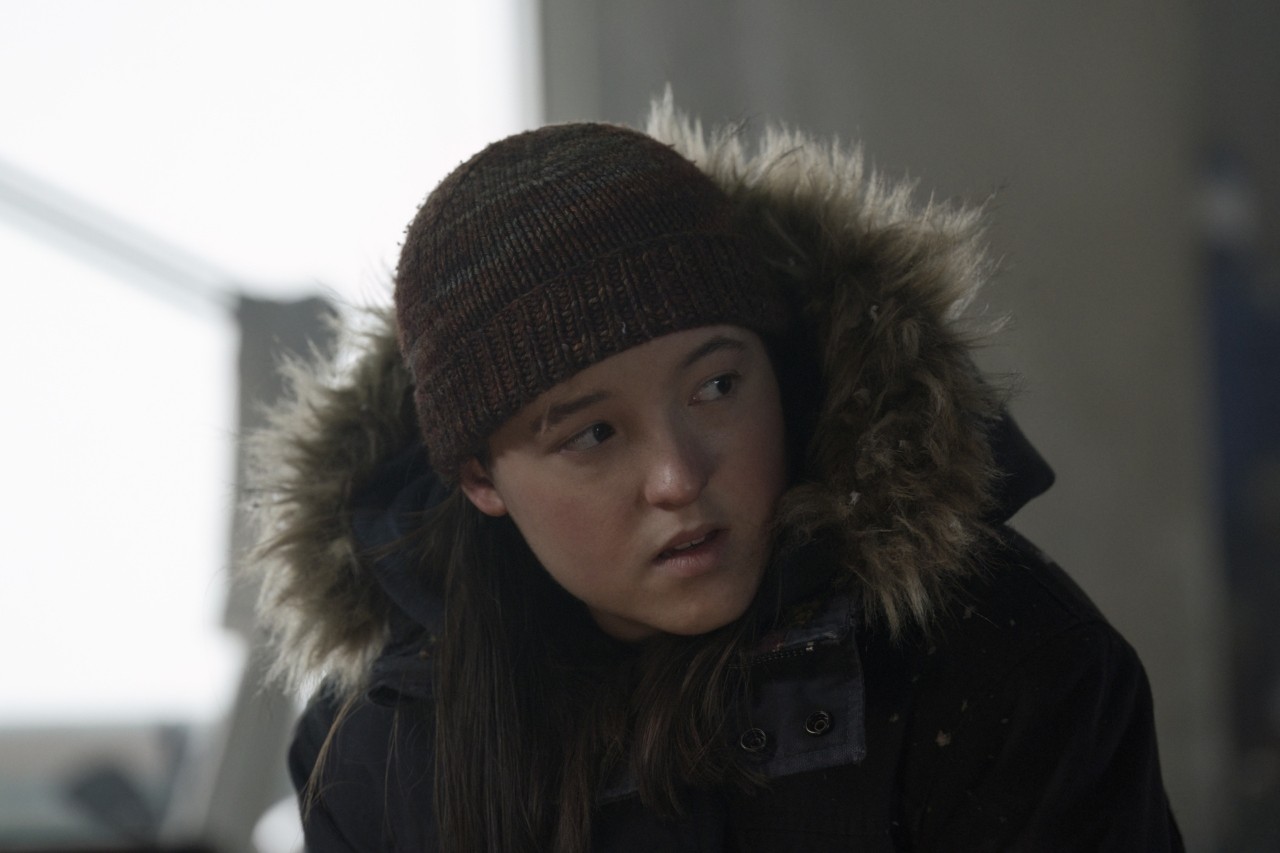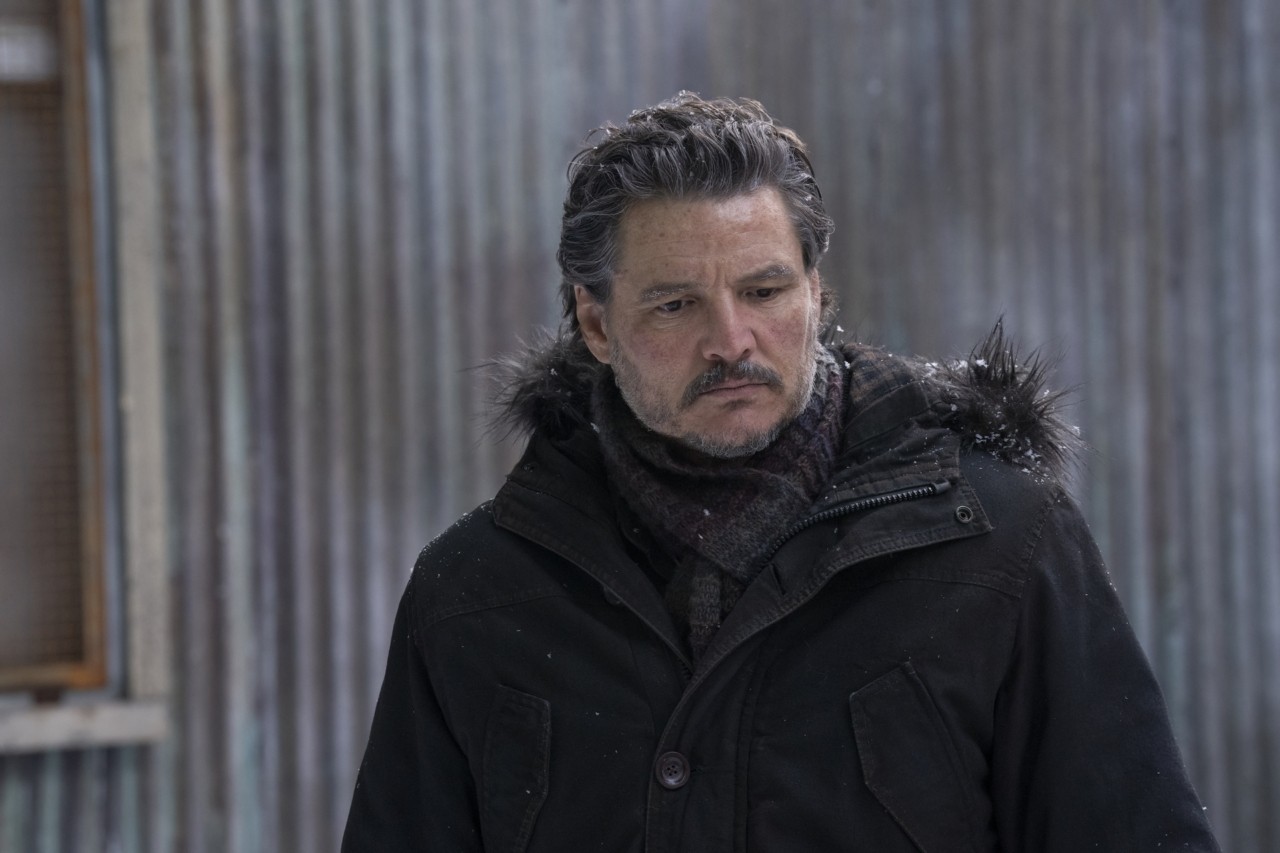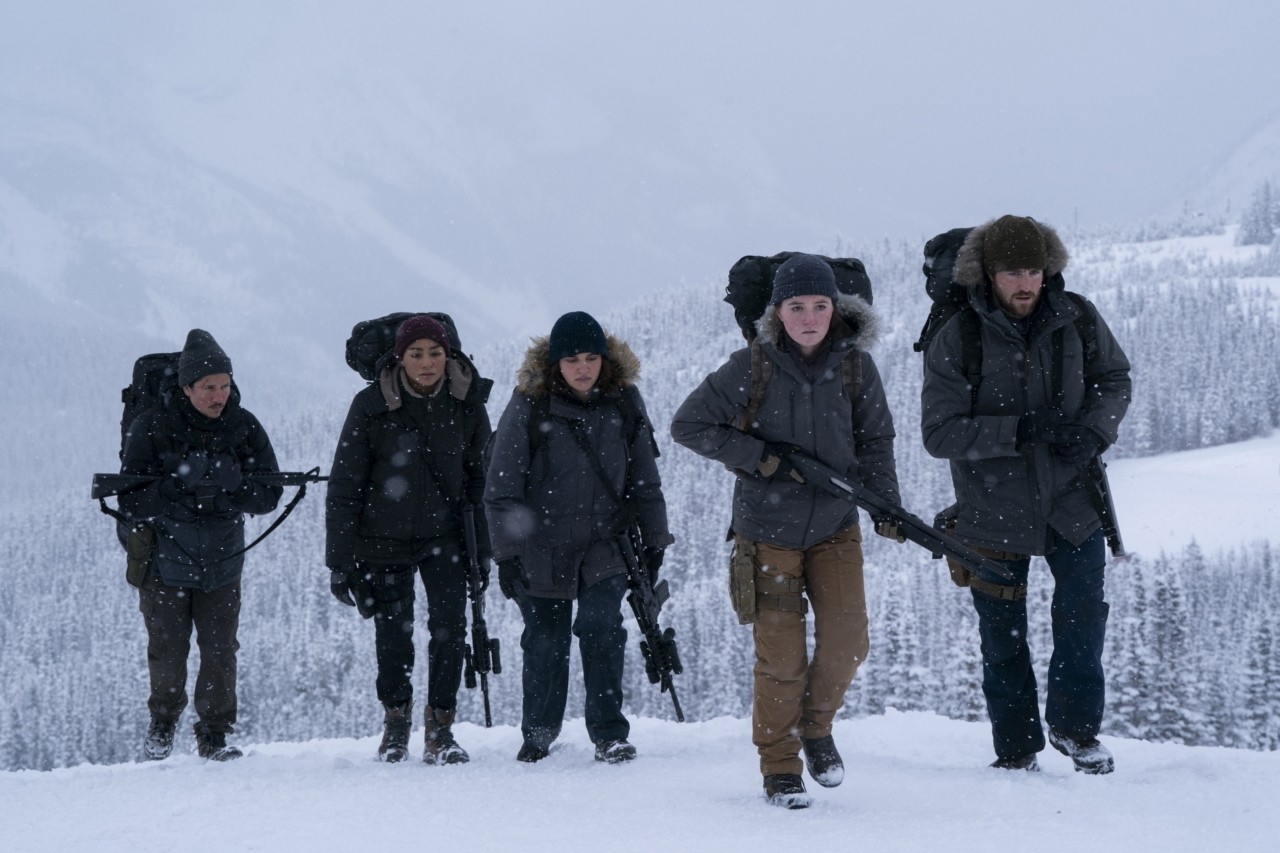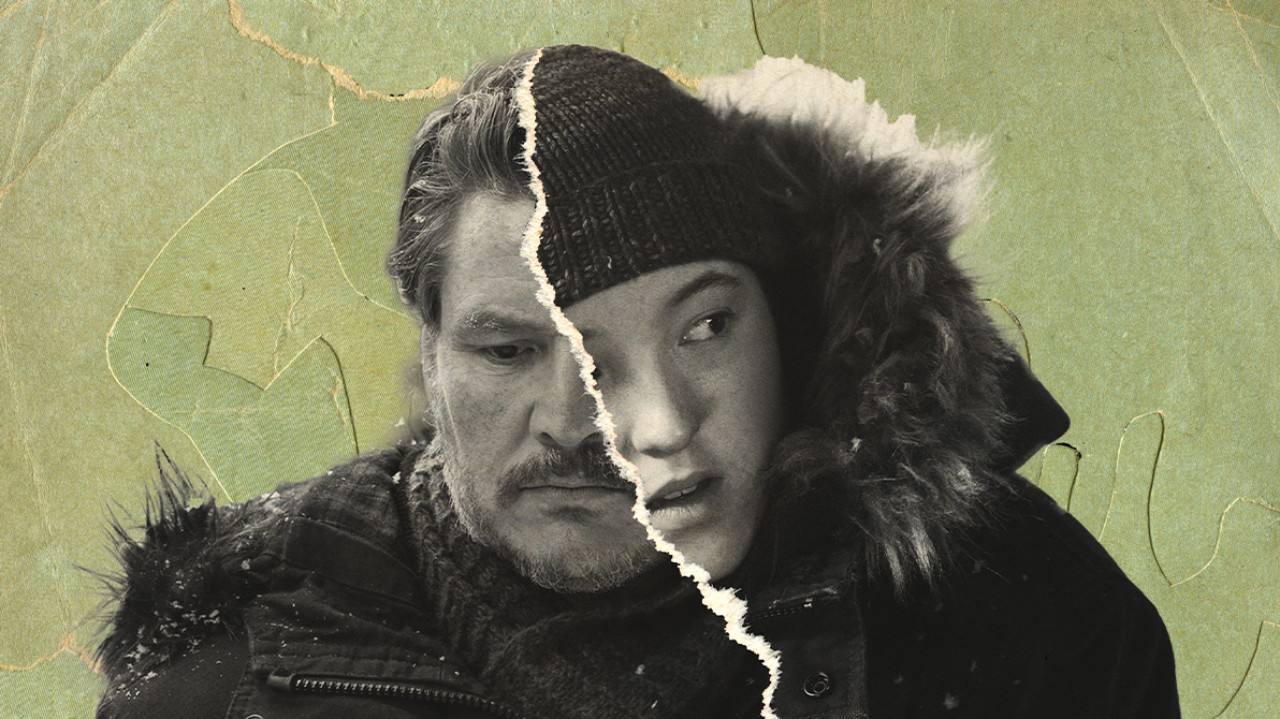
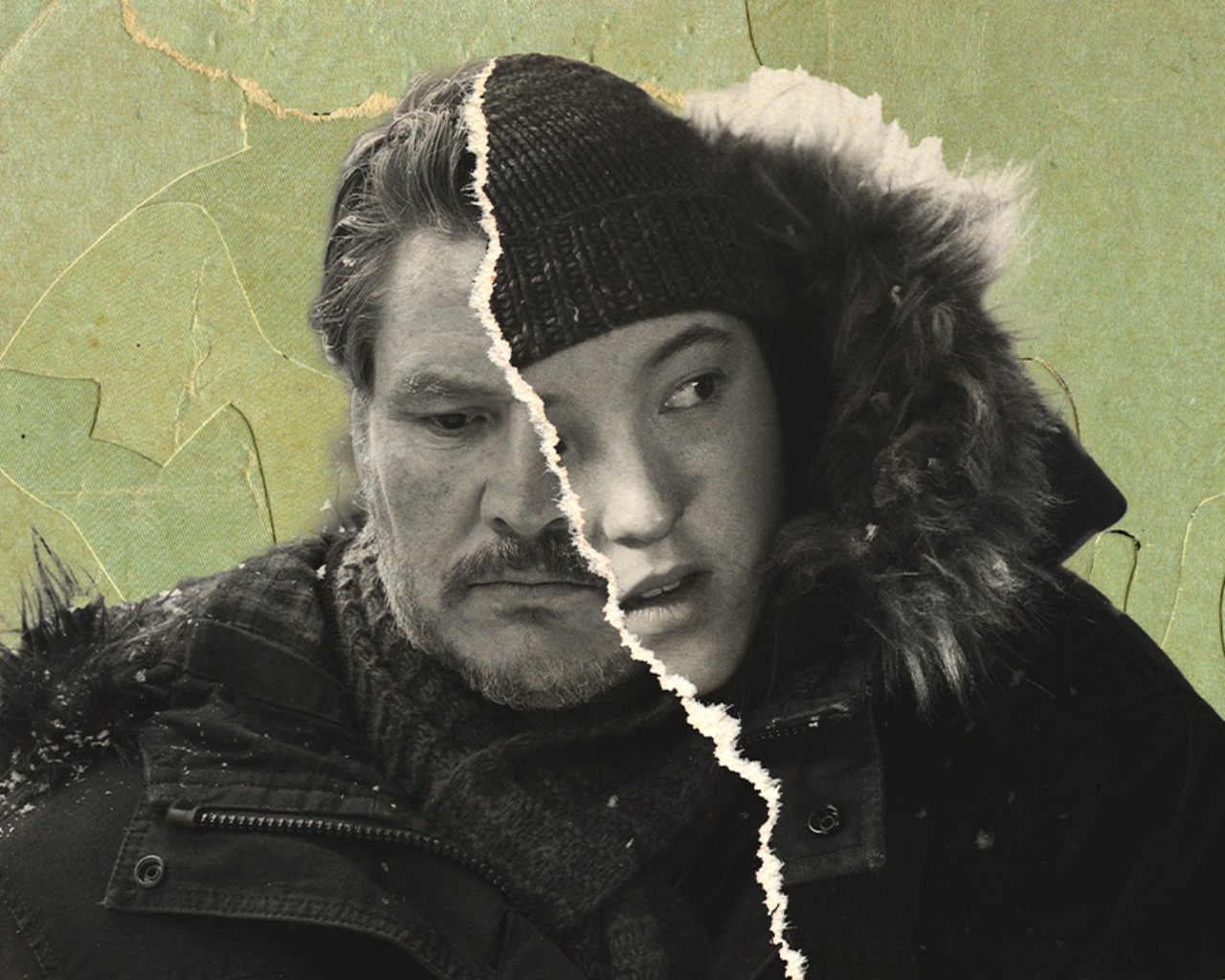
Words by Leila Latif
artwork by anthony gerace
There’s a cruel symmetry to The Last of Us’s second season, which leaps ahead five years. The narrative choice lands with unexpected resonance: Five years ago, in the spring of 2020, we were locked in our homes watching the death toll from a novel virus skyrocket in real-time as public health institutions we had long taken for granted panicked, buckled, and broke.
By the time The Last of Us premiered in January 2023, it felt as though we’d emerged from the worst of it. The show is set in the decades after a devastating pandemic where fungal spores have infected much of the global population and turned them into mindless monsters. It follows a hardened smuggler (Joel) as he escorts a teenager (Ellie), immune to the disease and possibly the key to humanity’s survival, to a medical research facility run by a militia known as Firefly. But Joel soon realizes Ellie would be killed to create a potential vaccine, and abandons the plan entirely.
Today, just two short—and five long—years later, The Last of Us returns to remind us how quickly we forget the lessons we once believed too searing to unlearn.
The first episode of season two technically commences the instant the last one ended, with Ellie (Bella Ramsey) making Joel (Pedro Pascal) swear that everything he said about the Firefly—who they just escaped—was true. Meanwhile, the survivors of the militia, who are under the leadership of Abby (Kaitlyn Dever) and dwelling in a giraffe-inhabited Salt Lake City, focus on vengeance rather than healing in their pledge to kill Joel. The rest of the episode follows Ellie and Joel in an uneasy détente in Wyoming that’s straining to maintain its infrastructure given the rapidly increasing numbers of refugees, where Ellie is mostly confined to the garage and ignores Joel at every possible turn.
In The Last of Us, infrastructure fails: Walls crumble, pipes collapse, and health care all but vanishes, reduced to makeshift first aid and the town’s lone mental health professional. That role, played with astonishing range by Catherine O’Hara, is one of the show’s quiet revelations: a psychotherapist who offers her services to Joel in exchange for bags of mediocre weed. The emphasis on mental health amid such ruin is one of the most powerful aspects of this new season. In a world this brutal, no one can be expected to endure—let alone lead—without reckoning with the psychological toll.

And perhaps, had we spent the past five years confronting what we lived through instead of rushing to forget it, we might have started building a more resilient social infrastructure in our own world. As the quote widely attributed to Mark Twain goes, “History doesn’t repeat itself, but it often rhymes.”
Today, we may not be locked inside again or scheduling another Zoom quiz; but we are, unmistakably, rhyming with the world of a half decade ago. Global leaders with little stake in the collective future have returned to power. Public health infrastructure is actively being dismantled by President Donald Trump across the United States, limiting access to what little remains of accessible healthcare. Trump’s policies have far-reaching implications: The country has withdrawn from the World Health Organization, and with it, investment in global health funding has plummeted. Meanwhile, misinformation and conspiracy theories about health, once relegated to the margins, now occupy the upper echelons of power—just as the United Nations warns of the “unprecedented” threat of a new bird flu strain.
If a crisis on the scale of COVID-19 were to strike again, who among us could say, with any confidence, that we’d fare better? That the institutions meant to protect us would rise to the challenge? Or that we would not find ourselves, once more, in Joel’s world: frightened, fractured, reaching for connection in the midst of mass death and institutional collapse?
The reality is that if another crisis was to hit, the consequences could be even more catastrophic. Climate inaction is driving temperatures up and ecosystems to collapse, and expanding animal-human contact zones are already accelerating the emergence of zoonotic diseases. Fungal pathogens, which have long been overlooked, are thriving in warming environments—just as The Last of Us imagined. The show’s premise, once a total fictional dystopia, now feels more like a warning: Without urgent climate and health system reform, the next outbreak may not just overwhelm us, it may fundamentally reshape what it means to survive.
The series, of course, draws its origins from the video game phenomenon that began in 2013, with this season based on the 2020 follow-up. What sets The Last of Us apart—both from similar dystopias like The Walking Dead and increasingly from the reality it reflects—is that it refuses to cede fully to despair. Where others present only decay, The Last of Us finds glimmers of hope and perseverance: people determined to build something better and to not lose everything. Even amid devastation, there are lives—and a world—worth fighting for.


It’s an ethos that is crystalized in “Long, Long Time,” the beloved first season episode that remains the show’s quiet apex. In it, Bill (Nick Offerman) and Frank (Murray Bartlett), a couple living in total isolation, build a life of tenderness, intimacy, and celebration. It’s a portrait of love that mirrors the darkest days of our own pandemic confinement, when connection felt fragile and sacred. This may not be the world they hoped for, but they created something meaningful within their fortified home and extended kindness to like-minded strangers. It’s a reminder that even the smallest of communities—a community of two, in this instance—built on trust and grace are worth fighting to protect.
Still, in 2025, a complacency has set in on-screen and off. Despite the marches, the outrage, think pieces, and policy pledges, many seem content to wait it out, hoping that the very institutions we rely on to keep ourselves and our loved ones healthy and safe will be rebuilt by some future, more benign administration. But this—as history and fiction continually remind us—doesn’t always work out.
In The Last of Us, Joel and Ellie find comfort in the interpersonal dramas, tender explorations of queerness, and decorating their spartan houses to make them homes. But ignoring the rot in their world’s already fragile institutions—particularly when they concern the health of their community–doesn’t protect them. The threats don’t wait. Petty leaders will still seek vengeance. Mindless hordes still gather at the gates. And the cost of disengagement is always paid in blood.
As The Last of Us returns, the show deepens its meditation on life after societal collapse and the murky ethics of survival. Its post-apocalyptic world might be fictional, and fungal spores may not yet threaten our existence, but the emotional and systemic decay it portrays cuts uncomfortably close. Five years after COVID-19 became a reality, we are seeing a retreat from preparedness at precisely the moment we need it most—and once again, The Last of Us invites us to consider what happens when the systems meant to protect us are allowed to unravel.
That idea takes sharper shape in season two, which doesn’t simply imagine life after disaster; it reflects a world already inching toward it. The future it depicts isn’t quite our own. But it certainly rhymes.

‘The Last of Us’ Season 2’s Dystopia Is More Mirror Than Make-Believe
